The Gilded Age was a period of time between the Reconstruction Era and the Progressive Era during which America underwent rapid economic growth and industrial expansion. From the end of the Civil War to the year 1900, heavy industries like factories and coal mining—but particularly railroads—created monopolies that led to the amassment of unbelievable wealth for some, while most received dreadfully low wages in return for their labor.
In particular, individuals like John D. Rockefeller, Andrew Carnegie, Cornelius Vanderbilt, and J.P. Morgan built net worths that made them some of the wealthiest men in the world. Not all of them, however, used humane means to get there. Those who engaged in unethical business practices and exploited their workers became known as Robber Barons.
To fill the rapidly expanding job market, many immigrants from impoverished areas in Europe moved to the United States in the hopes of finding new opportunities. What most of them found, however, were long hours and little pay, and many died from preventable diseases and poor living conditions due to dwelling in cities that were unprepared for rapid population growth.
Although important economic and industrial advancements were made during this period, it was at the sacrifice of many innocent people while only a select few actually benefited from the financial impact. Continue reading to discover a collection of books we’ve rounded up that will reveal the corruption underneath the era's seemingly golden surface.

The Robber Barons
Matthew Josephson weaves an exhilarating tale that is more of a historical exploration than a collection of biographies. This book uncovers how the notorious Robber Barons rose to their positions of vast wealth and influence during the Gilded Age. Not only did they shape the era, but even today, their namesakes can be found at important universities, museums, banks, and more.
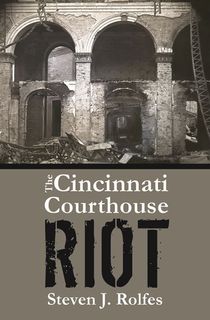
The Cincinnati Courthouse Riot
In 1883, the city of Cincinnati witnessed a 10,000-person riot that left 50 dead, more than 100 injured, and the courthouse burned to the ground. Sparked by natural disasters and corrupt leaders in government, the riots occurred over the span of three days and brought an end to the current political regime. Unfortunately, they also led to the rise of George Cox, a notorious politician who ruled the city for the next 30 years. Discover a vivid image of the riots in a large growing city during the Gilded Age in this book, which also details the Know Nothing Riot, the effects of the Great Ohio River Flood, and more.

The Incorporation of America
During America’s westward expansion, the boundaries between socioeconomic classes became more solidified than ever. A structured middle class emerged above the working class, and above all were the powerful, corrupt business elite. This updated edition of Alan Tachtenburg’s original work successfully conveys the formation of America’s corporate culture and social hierarchy during this period.
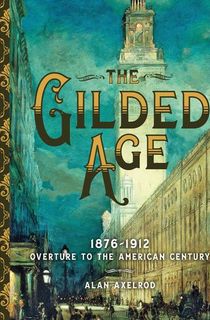
The Gilded Age
From bestselling author Alan Axelrod, this book explores the subject of the Gilded Age in a fresh way. The author offers parallels to modern times while exploring the era from various points of view. Complete with photographs, newspaper clippings, political cartoons, and more, Axelrod creates a uniquely vivid impression of what the time period was like and how it may have foreshadowed our own.

America in the Gilded Age
Author Sean Dennis Cashman nicely balances his study of the Gilded Age's broad movements with portraits of individual people. Following the history of America as it navigated both the Industrial Revolution and the settlement of the West, America in the Gilded Age was called “a lively, often entertaining and generally well-balanced treatment” by History.
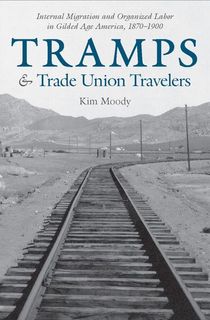
Tramps & Trade Union Travelers
Author Kim Moody reveals the impact of the Gilded Age on independent labor parties, or the lack thereof, in this thoroughly-researched look at the era. Moody contends that a lack of class consciousness is not to blame for the dearth of labor parties. In fact, he uses archival evidence to assert that workers at the time actually displayed high levels of class consciousness and political radicalism. Using primary sources, Tramps & Trade Union Travelers offers insight into early American capitalism, migrant workers, and how organizational weakness undermined efforts to build independent labor parties in the late 19th century.
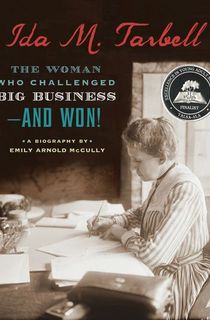
Ida M. Tarbell
Discover the story of Ida Tarbell, one of the first investigative journalists and one of the most influential of her time. Most notably, Tarbell published a series of articles which exposed the corruption behind John D. Rockefeller’s fortune and his company, Standard Oil Trust. She was a woman in a male-dominated industry, but despite setbacks, Ida Tarbell went on to achieve lasting prominence.

America in the Gilded Age
The first edition of this book, published in 1984, achieved classic status and was widely regarded as the official account of what happened in America during the late 1800s. Now revised and updated, this book is even more widely-encompassing than before. Newly extended chapters focus on immigration, labor, and the American Renaissance to paint a more complete picture of the causes and effects of the Gilded Age.

When the Astors Owned New York
Brought to you by Justin Kaplan, the Pulitzer Prize–winning biographer of Mark Twain, When the Astors Owned New York illuminates the life and legacy of John Jacob Astor IV and William Waldorf Astor. As two cousins equipped with the largest fortune of their time, they vied for positions in New York City society and created some of the grandest hotels the country had ever seen. This book outlines their early lives and careers, as well as important historical and architectural information.

President-Making in the Gilded Age
With all the corruption involved in the rise of the Robber Barons and industrialization, it should come as no surprise that politics were equally as bad, if not worse. At this time in U.S. history, there were no primaries, no debates, and little to no campaigning. Wealthy party bosses controlled the nominating conventions and chose the nominees. However, candidates nominated by both Republicans and Democrats won despite the opposition of the bosses. In this book, author Stan M. Haynes analyzes the pageantry, speeches, strategies, and frequently shocking outcomes of the presidential nominating conventions during the Gilded Age.
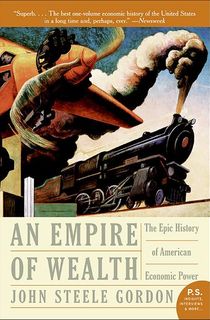
An Empire of Wealth
For a greater appreciation of how the Gilded Age fits into both American history and world economic history, An Empire of Wealth is a fantastic read. In a work that Newsweek calls “the best one-volume economic history of the United States in a long time and, perhaps, ever,” author John Steele Gordon traces the major decisions and movements that defined America's finances, from the recession that followed the Revolution to the Great Depression and everything in between.

The Gilded Age: a History in Documents
Alongside the industrial boom and the large disparities in wealth happening during this time, prominent activists like W.E.B. Du Bois spoke out against racial injustice, Homestead Steel workers protested against labor conditions, and pioneers lamented loss of life in the Wild West. This unique take on the Gilded Age draws from letters, journals, newspaper articles, and more to tell a story more complex than the widely-known tale of the mega-rich Robber Barons versus the poor.

How the Other Half Lives
Originally published in 1890, How the Other Half Lives is perhaps the most important account of the Gilded Age era to date. This book revealed the deplorable living conditions of workers in New York slums, the meager pay they received in return for toiling work, and exhausted children who were forced to take on multiple strenuous jobs at once. As a result, How the Other Half Lives ushered in massive reform of New York’s Lower East Side including better schools, indoor plumbing, and better work conditions.

Iron Empires
You can't talk about the gilded age without talking about the impact of the transcontinental railroad… and the tycoons who battled to come out on top. Names like Cornelius Vanderbilt, Jay Gould, and J. P. Morgan all entered the fray, and their competition shook an entire nation. Iron Empires examines four decades of some of the most vicious rivalries in U. S. history.
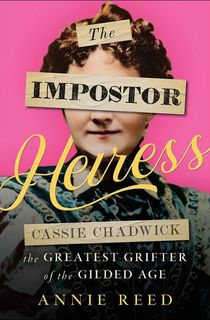
The Impostor Heiress
While many books about the Gilded Age explain how the robber barons exploited working people, Annie Reed's history tells a different story. In this one, Cassie Chadwick is the one exploiting the banks and robber barons. By posing as Andrew Carnegie's illegitimate daughter, Cassie was able to con businessmen out of fortunes and live a lavish life before it all came crashing down.





